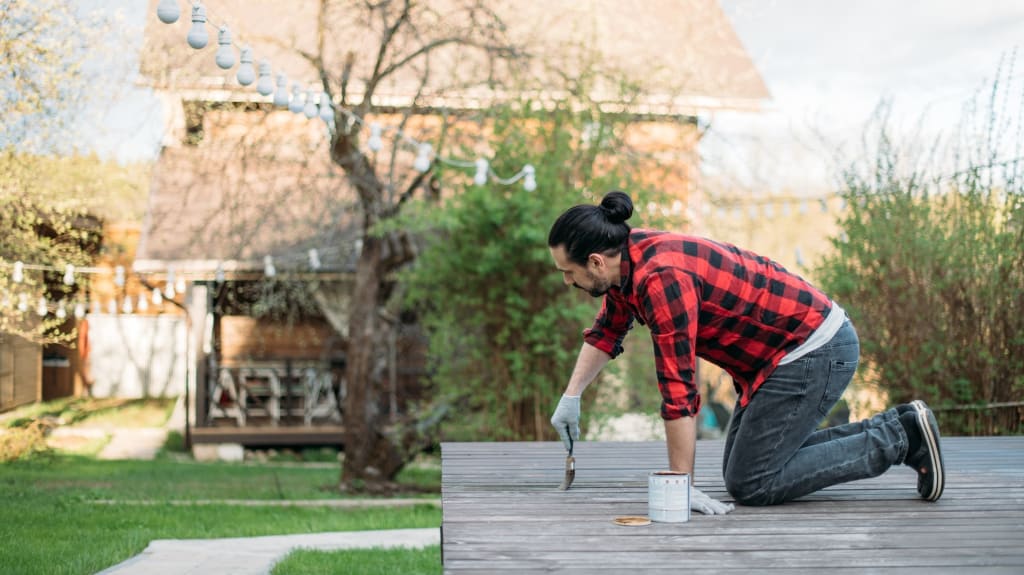Scratching your head when it comes to understanding renovation, maintenance or real estate terms? Or do you just need a refresher? Check out our glossary of housing terms.
0–3/4" gravel Mixture of crushed stones of different sizes. Used as a base for paving and asphalt work.
ABS Abbreviation for acrylonitrile-butadiene-styrene. A type of rigid plastic used in plumbing pipes.
Air exchanger A device that transfers fresh air from outdoors to indoors.
Asbestos A fibrous silicate mineral that was historically used in the construction industry due to its insulating properties.
Backwater valve A valve installed in a fixture or floor drain to prevent sewage from flowing back into the basement.
Bay window and bow window Types of windows with different arches that project outside the main line of a building.
Bidet A sanitary fitting installed next to or within a toilet that's used for washing intimate areas.
BTU Abbreviation for British Thermal Unit. A unit used to measure how much energy a device produces.
Cadastre Government register in the form of a map that indicates property boundaries.
Caulk To make tight with a sealing material to prevent the flow of air or liquid.
Concrete strength A specific concrete mixture made based on its intended use.
Counter depth Distance from the backsplash to the front of the kitchen countertops, which is typically 75 cm (30 inches). Used to select household appliances.
Crawl space A low-clearance space between the lowest occupied floor of a house and the ground, which serves as a buffer zone for temperature and humidity.
Drywall joint finishing Applying a coating on joints between plaster or drywall panels to create a smooth and uniform surface.
Drywall Plasterboard that is used as a finish material on interior walls and ceilings.
Duct A conduit through floors or walls that conveys air in space heating, air conditioning and ventilation systems.
Eavestrough A trough fixed to an eave to collect and carry away the rainwater from the roof.
Electrical panel An electrical box that distributes electric power to each branch circuit (each plug and switch) throughout the residence and provides overload protection by means of circuit breakers.
ENERGY STAR A US government program created in 1992 to certify energy-efficient products.
Engineered wood Wood that has been manufactured to make other products, for example, a wood layer that's a few millimeters thick bonded together with a more solid base.
Excavation The act of removing land or soil.
Foundation drain (weeping tile) A drain installed around the outside of a foundation wall below the level of the foundation floor to collect and convey surface and ground water away from the foundation.
Foundation Part of a building that is under the ground and supports it.
Framework Wood or metal assembly that supports the construction, such as platforms, post-and-beam frames, lumber or planks.
General contractor A person or company that supervises all the work and various tradespeople on the construction site.
Gross area Total amount of square footage of a building, including walls, that's used for the sale of condos and new homes.It's calculated from the building's architectural plan.
As opposed to:
Net area Refers to the liveable area of a property, calculated within the walls.
Hard water Drinking water that contains a high amount of dissolved minerals, which can be problematic.
Heat pump An energy-efficient appliance that's used to heat or cool an area.
Heavy equipment Large pieces of machinery or equipment used to work on buildings or land.
I-joist A wood or metal beam used to support a floor.
Landscaper A person who designs a garden, yard, patio, or another outdoor space, but doesn't necessarily complete the work.
Load-bearing wall A wall designed to support the frame of a house.
Mineral wool A material widely used for insulating buildings. Offers a good quality/price ratio.
Negative slope A slope in the ground that increases the risk of water seepage.
Parging A coat of plaster or cement mortar applied to masonry or concrete walls.
Paving stone A paving material made of concrete that has been moulded into a specific shape to create a smooth and uniform floor covering.
Plywood A light and resistant wood panel made of layers of veneer joined with glue.
Radon gas A naturally-occurring radioactive gas that is found in soil. It can enter a house through cracks in the foundation.
Reinforced concrete Concrete that contains steel reinforcement for increased strength.
Rubble Pieces of stone that have been cut to make them manageable. Used to build walls or a foundation for a building.
R-value Unit that measures how well certain insulation materials can resist heat.
Septic tank A system made of up a pit, a hole and an absorption field for basic sewage treatment. Usually found in places without a municipal sewer system.
Shingle A small unit of roofing partially laid in overlapping layers as a covering.
Solarium A glass-enclosed room that's exposed to sunlight.
Stucco A mixture of cement, sand and lime that's used to cover interior and exterior walls.
Thermal bridge A weak point (or area) in a building's insulation that allows heat to pass through.
Treated lumber A wood product that has been treated—just like the name suggests—to improve its decay or fire resistance.
Trellis A structure, usually made from interwoven pieces of wood. Used to fully or partially block a view while allowing air to circulate.
Underfloor heating A form of central heating that aims to heat a room evenly and efficiently using hydronic, cable or piping elements embedded in a floor.
Underpinning Strengthening and reinforcing an existing foundation, or digging a new one.
Weephole A small hole at the bottom of a brick wall to drain water out behind the face of the wall.




